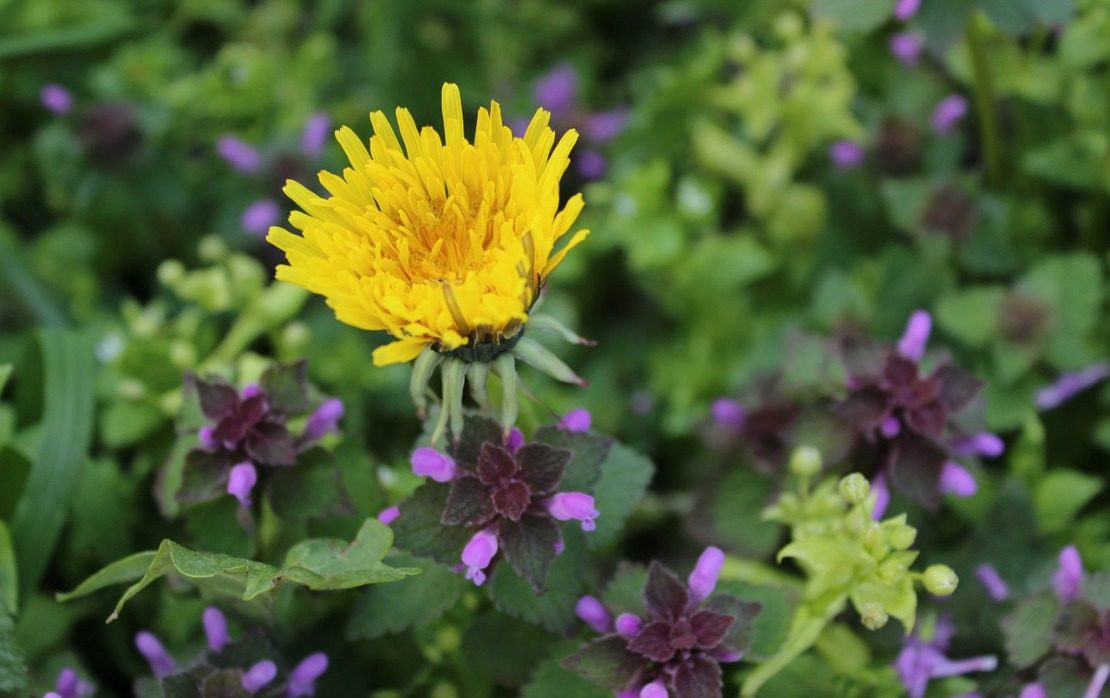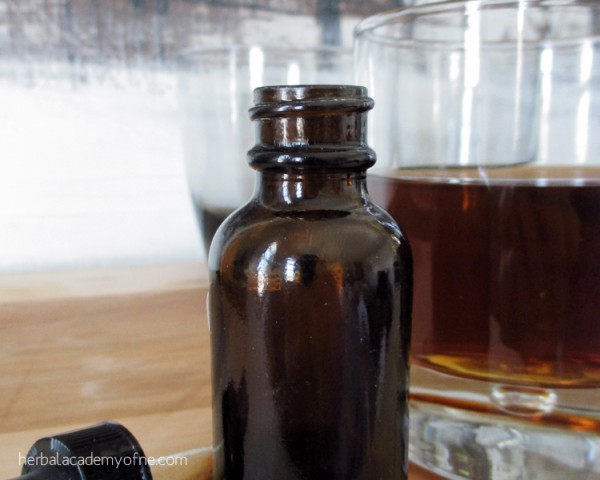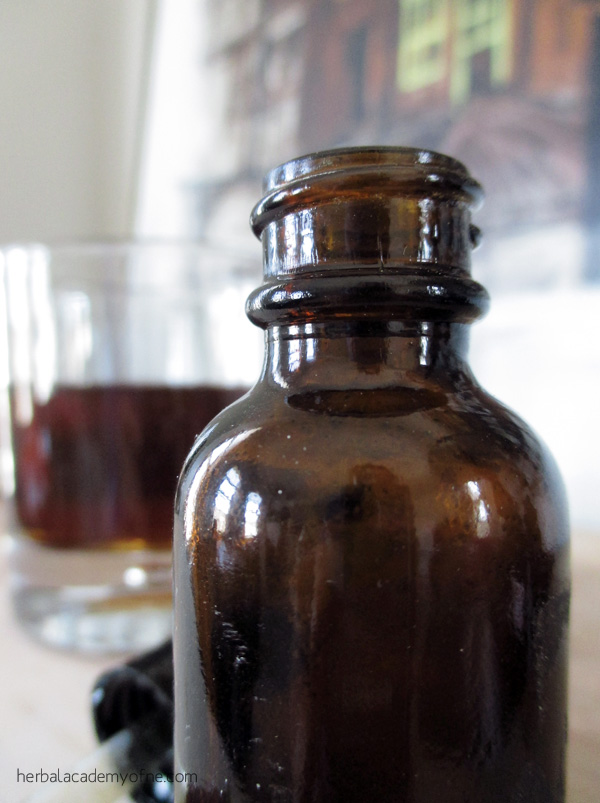
Bitter Integrations! Part 2: Making Bitters
In my previous article, Bitter Integrations! we saw how humans adapted to some bitter plants to not only attain precious plant vitamins and minerals, but also improve our digestion and lower organ performance of processing, elimination, and detoxification. Part 2 will discuss making bitters, the health benefits of bitters, and specifically how bitter herbs assist and offer healing to the human body.
Certain plants contain chemical properties that are noxious to certain degrees and contain a bitter flavor. Some of these constituents that cause this response are flavonoids, berberine, lacupicrine, and tannins, and can be found in leaves and/or roots. Be aware that plants (such as belladonna and water hemlock) containing certain alkaloids are poisonous bitters so one should always carefully reference the plants when wildcrafting.
How Bitters Work
When taste buds on the tongue detect bitterness, a message is transmitted to the vagus nerve to report an instinctive possible toxic invasion to the central nervous system. To help relieve the body of this possible danger, the gut receives this message and starts to increase the stomach flow of the HCL enzymes. This process helps break down proteins to aid in extracting nutrients from consumed material (food). The next stage is instructing the liver and gall bladder to increase the bile in the system to handle the digestion of fats and oils.
The bitters do not stop there! They keep the liver and pancreas “on guard.” Both organs increase their enzymes to handle a high intake of calories. This results in a more steady release of blood glucose, which enhances energy levels. The last organ of bitter influence is on the colon. The colon is helped to promote regular bowel movements needed to excrete toxins and waste efficiently.
In summary, when the digestive tract and liver are functioning well, protein is properly assimilated, creating a better metabolism and excretion. “The ongoing exposure to a rich and potent xenobiome [bitters] keeps the liver on its toes…” (Masé, 2013), helping the body to sort out the good and bad of ingested food and toxins, purifying the blood. These actions put bitters into an herbal classification called alteratives.
Alteratives
Alteratives are known in herbal circles as “blood purifiers.” Rosemary Gladstar taught that alterative bitters are “agents that gradually and favorably alter the condition of the blood” (Gladstar, 2011). Herbalist Michael Tierra explains that an alterative “cleanses and purifies the blood; alters existing nutritive and excretory processes gradually restoring normal body functions” (Tierra, 1992).
Bitters can resolve digestive issues such as constipation, gas, bloating, overeating, lack of appetite, nausea, difficulty digesting fats and some food intolerances. As David Hoffman suggests “..some bitters can also repair gut wall damage by stimulating self-repair mechanisms”(Hoffman, 2003). The best news is that you do not need a huge amount everyday to attain a healthy life style.
Contraindications
As with any herb, contraindications must be researched to avoid issues with medical conditions and pharmaceuticals. Consult medical professionals to ensure there will be no ill effects in your circumstances. Per David Hoffman, the following conditions are not conducive to using bitters because of over stimulation of the exocrine gland in some cases:
• Pregnancy
• Kidney stones
• Gallbladder disease
• Dysmenorrhea
• Gastro esophageal reflux disease
• Hiatal hernia
• Gastritis
• Peptic ulcer
Using and Making Bitters
I use a bitters tincture on a daily basis that contains dandelion, burdock, barberry, and ginger, or the occasional yellow burdock formula. This formula was suggested by my professional herbalist for low energy and slow digestion. After seeing improvements in energy level and digestion, I mostly use bitters for my system maintenance.

As always, my herbalist and doctors made sure other supplements did not conflict with the bitter tinctures. I use them before meals to get the digestion revved up and ready. The taste does wake me up first thing in the morning just like a cup of coffee use to do. But instead of getting caffeine jitters, I enjoy a healthier start in my mornings.
Below are a few suggestions to start incorporating these easily accessible bitters into diets. Organic is always the best to consume whenever possible. These listed bitters make wonderful tinctures. To see step-by-step instructions for tincture making, see our How to Make a Tincture article.
Dandelion, Taraxacum officinale
Parts used: Root, leaves, and flowers
Organs affected: Spleen, stomach, kidney, liver
Chemical constituents: Lactupicrine (bitter principal), tannin (bitter), inulin, and a latex-like substance
Properties: Alterative, cholagogue, diuretic, stomachic, aperient, tonic
Dandelions have a resilient and sunny presentation and their effects on the human body are the same. You can use the leaves and roots as the bitter, but the flowers are also edible. If you wildcraft dandelions, ensure there are no chemicals or vehicle exhaust around them. When in doubt, buy the dry leaves and roots as they are not expensive.
Sautéed Dandelion Leaves
The early dandelion leaves of spring are tender and delicious but do not veer away as the leaves become more bitter in later seasons. Challenge your xenobiome with the tougher leaves as winter approaches for a healthy boost. The leaves are full of potassium and a highly effective diuretic.
Organic dandelion leaves
2 tablespoons organic extra virgin olive oil
2 cloves of garlic
Sea salt and fresh ground pepper to taste
1 tablespoon raw apple cider vinegar
- On a medium low temperature, heat up a fry pan with the olive oil and garlic.
- Saute garlic for 2 minutes.
- Add in the dandelion greens and cover for 10 minutes.
- Open cover, mix a little more and cover for 10 more minutes or until the leaves are limp. Remove from heat.
- Add salt and pepper to taste.
- Pour apple cider vinegar on top.
Dandelion Cold Tea
This soothing comfort for the seasonal cold with running nose and eyes is a favorite of mine.
2 tablespoon of dandelion dry root
3 cups of water
1 tablespoon peppermint
1 tablespoon catnip
1 tablespoon yarrow (bitter)
1 teaspoon of eyebright
- Decoct the dandelion root only for 20 to 30 minutes.
- Take off the burner, then infuse the peppermint, catnip, yarrow, and eyebright.
- Steep this combination for 20 more minutes.
- The infused herbs help the cold symptoms while the dandelion and yarrow clear out the cold quicker.
Burdock, Arctium lappa
Parts used: Root (mostly), leaves and seeds
Organs affected: Lungs, stomach, kidney, liver
Chemical Constituents: About 45% inulin (starch)
Properties: Alterative, diuretic, diaphoretic, nutritive, root is demulcent for external uses.
Used by many cultures to soothe skin conditions, this amazing root grows all around New England. Not only does it detoxify our bodies, it also assists the Earth to remove impurities from the soils, so beware when wildcrafting this wonderful bitter. If it is near tar or buildings, do not interrupt its soil detoxification. Move into wooded areas far from manmade material or high traffic roads.
This starchy rooted plant is strong and stable with a pretty pink spiky flower. Using only the root for our food needs, digging it up can be a challenge as it can break easily. So add patience into harvesting. Dry burdock is inexpensive and easily attainable at herbal shops. Young tender burdock is also called Gobo root in markets.
Burdock is a remedy for skin conditions that are dry, scaly and with skin ruptures (eczema, psoriasis, dermatitis). It is also a very mild bitter to help the digestive and bile secretions. Externally it is used as a poultice for wounds.
Add dry burdock root to soup stocks as a stock enhancer. Burdock can be steamed similarly to how you would steam carrots and turnips. It is tasty and will take good care of your liver.
Burdock Tea for Skin
1 part dried burdock root
1 part dried yellow dock root
1 part dried sarsaparilla root
Stevia or raw honey to taste
- Combine all dried roots and put into a jar.
- For every cup (8 ounces) of water you put into pan, add a teaspoon total dried roots.
- Decoct (simmer on low heat) for 20 to 30 minutes.
- After the roots are decocted for allotted time, pull off the burner and strain the tea into a tea cup to immediately sip or store in a heat proof container. (I use a mason jar of appropriate size to liquid amount made.)
- You may add honey or a small pinch of stevia leaves to sweeten to your taste. Though the root flavor may take a couple cups to get use to the taste, your body will enjoy this skin enhancing tea.
Conclusion
Incorporating these bitter recipes into your diet can help the body return to a natural digestive homeostasis. By promoting better digestive processes, increasing metabolism, improving detoxification and elimination by liver, bitters are wonderful and energy giving organisms instead of something to be avoided. Bitters are my favorite category of herbs so give it a try and see why. Let us know if you are already making bitters or will try these bitter recipes in the future! Post in the comments.
This article is written by Sharyn Hocurscak, herbalist and President of Herbal Community of Central Massachusetts.
REFERENCES
Masé, Guido (2013) The Wild Medicine Solution Healing with Aromatic, Bitter, and Tonic Plants. Rochester, Vermont: Healing Arts Press
Hoffman, David (2003) Medical Herbalism: The Science and Practice of Herbal Medicine. Rochester, Vermont:Healing Arts Press
Gladstar, Rosemary (2011) The Science and Art of Herbology. E. Barre, Vermont: SAGE www.sagemountain.com
De Bairacli Levy, Juliette (1997) Common Herbs for Natural Health, 2nd Edition. Woodstock, NY: Ash Tree Publishing
Tierra, Michael (1992) Planetary Herbology 2nd Edition. Twin Lakes, WI: Lotus Press
Green, James (2000) The Herbal Medicine-Maker’s Handbook, A Home Manual. New York, NY: Crossing Press/Random House








